- International
- Today’s Paper
- Mumbai News
- Chandigarh News
- Bangalore News
- Lucknow News
- Ahmedabad News
- Chennai News

PM Modi’s US visit: from attending Quad Summit to diaspora event, key takeaways from his 3-day tour
Here are the highlights from prime minister narendra modi’s ‘successful and substantial’ tour of the united states..
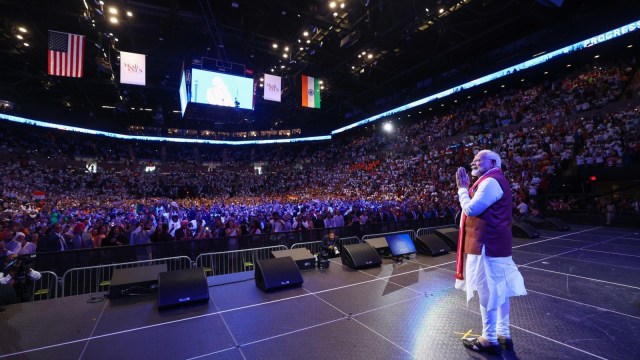
After concluding his three-day visit to the United States, Prime Minister Narendra Modi left for home on Monday, the Ministry of External Affairs said.
“PM @narendramodi emplanes for New Delhi after concluding a successful and substantial visit to the USA,” the ministry wrote on X.

During his trip, he attended the Quad Leaders’ Summit in Wilmington on September 21, addressed thousands of members of the Indian American community in Long Island on September 22, and spoke at the UN’s Summit of the Future on Monday.
The prime minister engaged in bilateral discussions with world leaders and held a roundtable with CEOs from leading American tech companies.
Here are the highlights from his US tour:
Day 1: The Quad Summit
On Day 1 of his US visit, Prime Minister Modi attended the Quad Summit hosted by President Joe Biden in Wilmington, Delaware. The summit was also attended by Australian Prime Minister Anthony Albanese and Japanese Prime Minister Fumio Kishida.

Modi noted that the Quad leaders gathered during a time of global tensions, emphasising that their collaboration is important for all of humanity.
Highlighting that they are “not against anyone” he said that they support a rules-based international order, respect for sovereignty, and the peaceful resolution of disputes. This was seen as a subtle reference to China’s assertive actions in the Indo-Pacific region.
President Biden was caught expressing concern about China on hot mic, saying that it is “testing” the Quad while trying to “buy diplomatic space”. The final declaration of Quad included stronger language regarding the South China Sea than in previous versions.
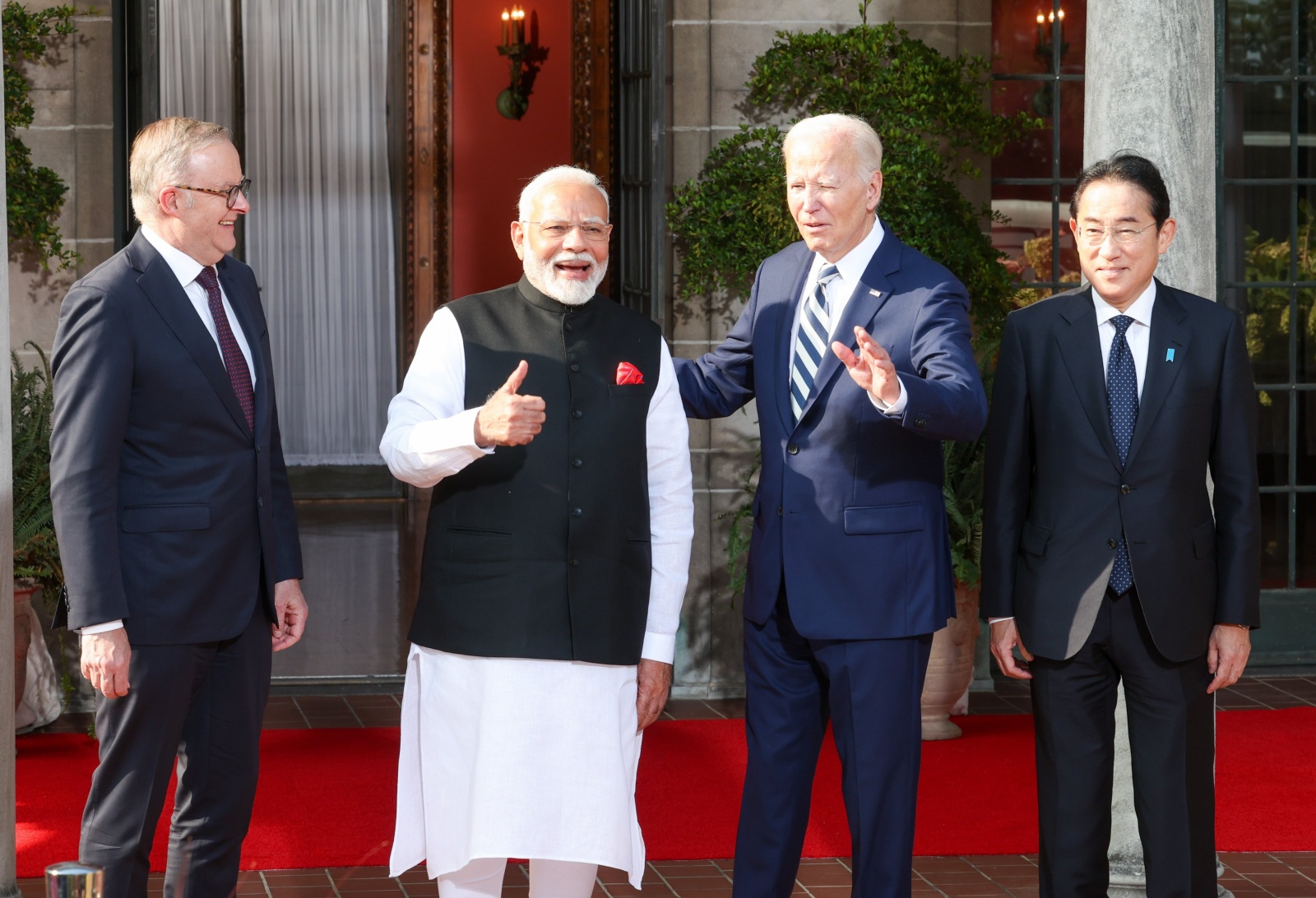
The summit featured a bilateral meeting between Modi and Biden, who remarked that the partnership between the United States and India is “stronger, closer, and more dynamic than ever”.
Both the leaders hailed a significant agreement to establish a new semiconductor fabrication plant in India, supported by the India Semiconductor Mission and a strategic partnership involving Bharat Semi, 3rdiTech, and the US Space Force.
The Quad leaders also announced the Quad Cancer Moonshot, a partnership aimed at initially combating cervical cancer in the Indo-Pacific, with plans to address other types of cancer in the future.
Modi and Albanese committed themselves to strengthening bilateral ties, with the Indian prime minister expressing his appreciation for the enduring friendship between his country and Australia. In a post on X, Modi described his meeting with Japanese Prime Minister Kishida as “very good”, focusing on cooperation in infrastructure, semiconductors, defence, and green energy.
Additionally, the US handed over 297 antiquities, smuggled out of India, to Modi during his visit, as confirmed by Foreign Secretary Vikram Misri. He also noted that issues related to Bangladesh were discussed in the meeting between Modi and Biden.
Day 2: ‘Modi & US’ mega community event
PM Modi addressed a gathering of over 13,000 Indian Americans, with many attendees hailing from the New York and New Jersey area, while others travelled from 40 states across the country. Organisers reported that sixty chartered buses were used for transportation.
Describing India as a “land of opportunities”, Modi shared his ambitious goals for the nation during his third term.
Modi also announced the opening of two new consulates in Boston and Los Angeles, addressing a long-standing demand from the rapidly growing Indian American community in these major cities.
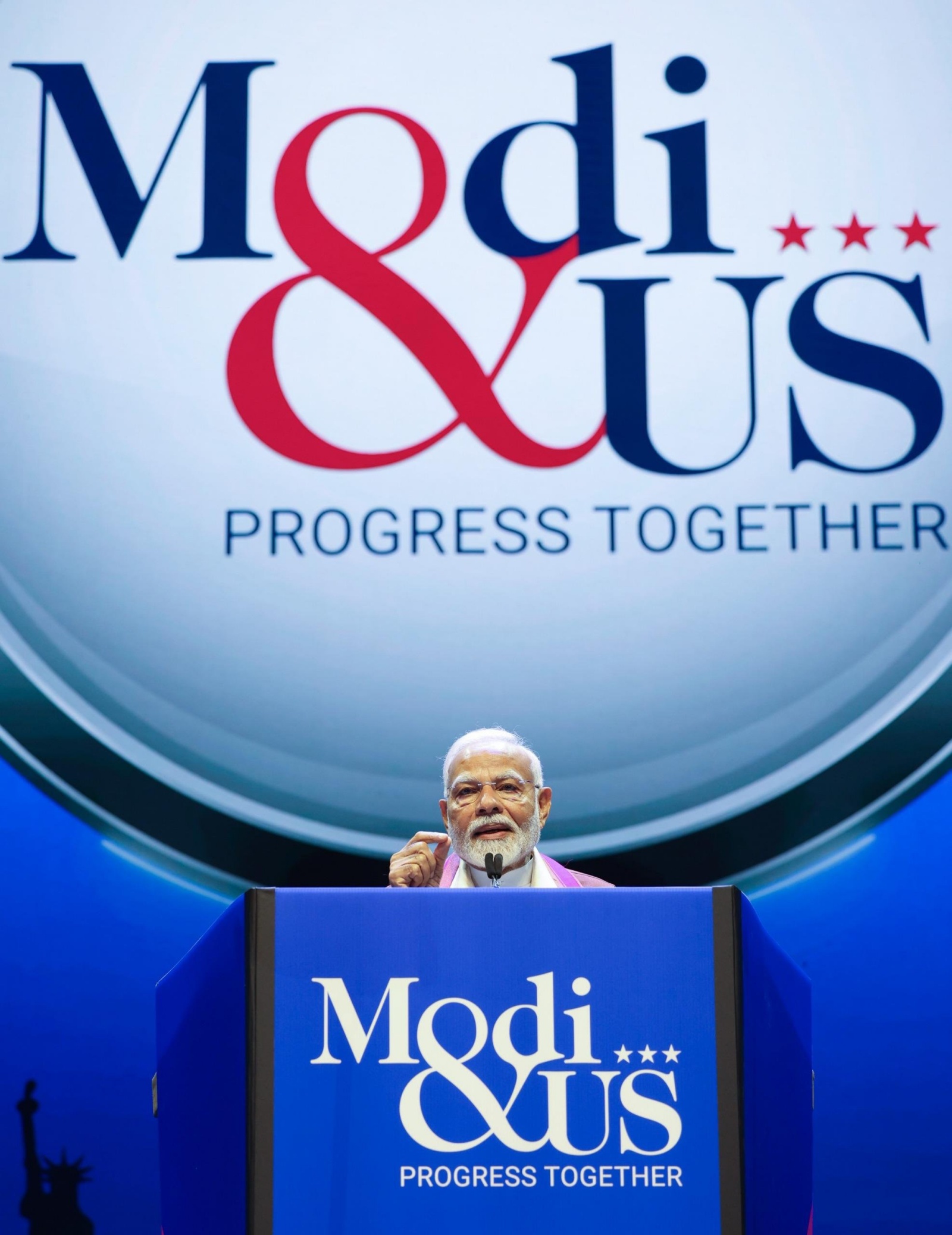
“Every Indian has confidence in India and its achievements. India today is a land of opportunities. It’s no longer waiting for opportunities. It is now creating opportunities,” he said, adding that in just a decade 250 million people have been lifted out of poverty.
The prime minister emphasised India’s foreign policy of fostering equal closeness with all nations, rather than maintaining equal distance.
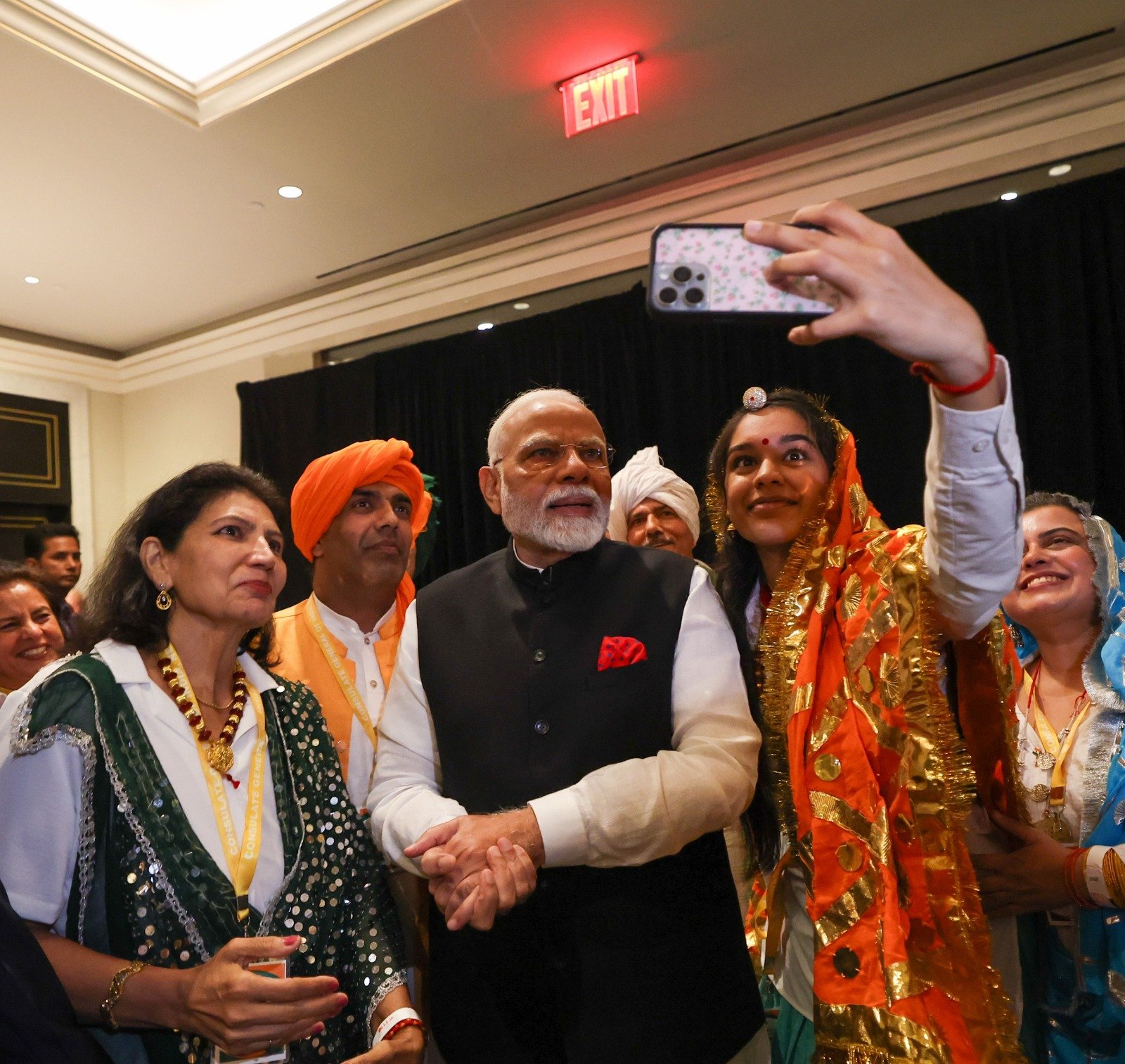
Recognising the vital role of Indian Americans in strengthening ties between India and the United States, he referred to them as India’s brand ambassadors.
Day 3: UN Summit of the Future
On the last day of his US visit, Prime Minister Modi addressed the UN’s Summit of the Future in New York. He began his speech with a namaskar, emphasising that he represents the voice of 1.4 billion Indians, or one-sixth of humanity.
“Success of humanity lies in our collective strength, not on the battlefield,” Modi stated, highlighting the urgent need for global cooperation amid ongoing conflicts like those in Israel-Gaza and Ukraine .
Modi stressed that reform is essential for the relevance of global institutions and pointed out that the inclusion of the African Union as a permanent G20 member during India’s presidency was a significant step in this direction.
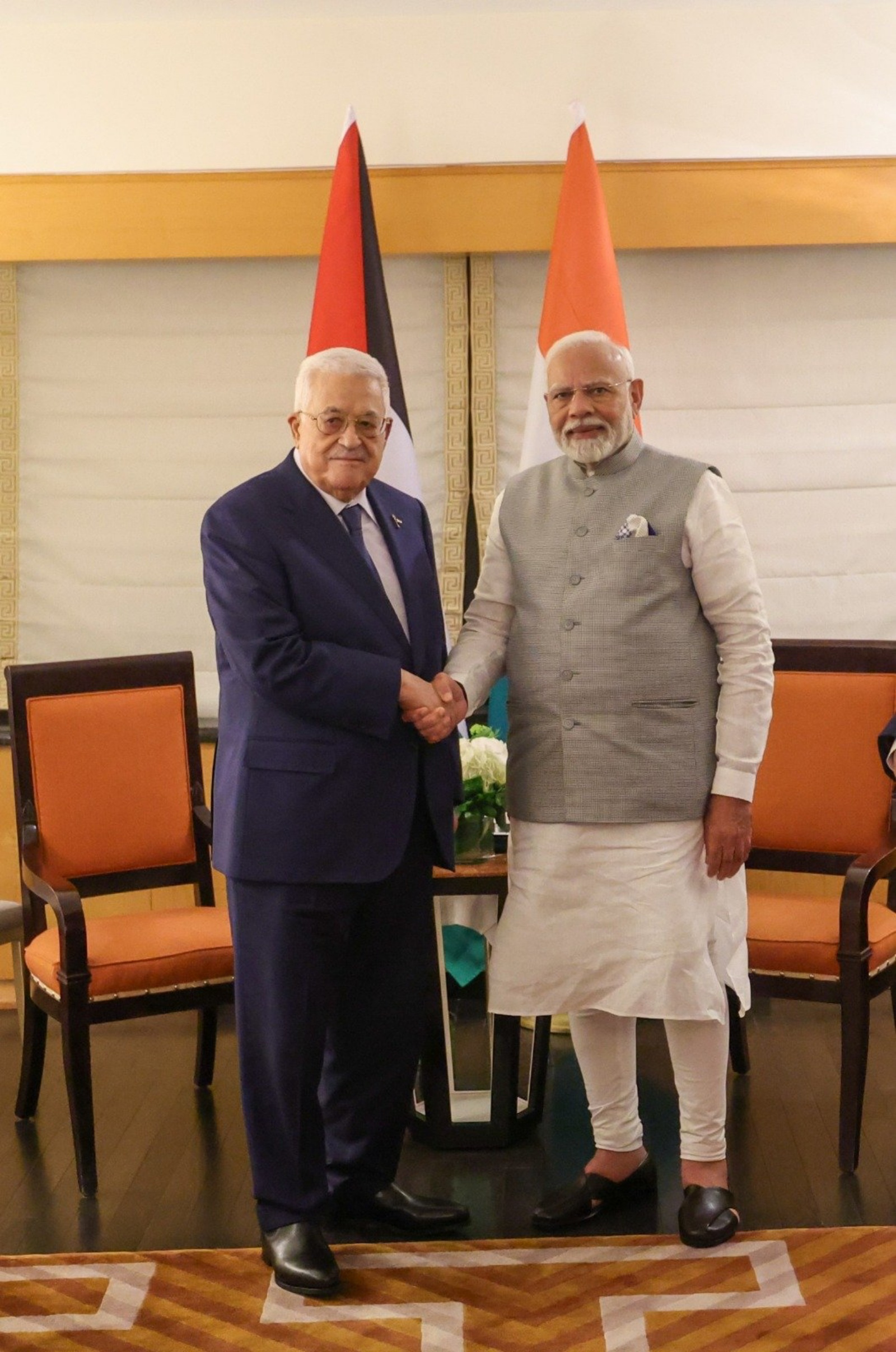
Modi acknowledged that terrorism remains a serious threat to global peace and security, and he noted that new areas of conflict are emerging, such as in cyberspace, maritime zones, and outer space.
During his visit, Modi met Palestinian President Mahmoud Abbas and expressed his “deep concern” about the humanitarian situation in Gaza and reaffirmed India’s support for restoring peace and stability in the region.
He also spoke with Ukrainian President Volodymyr Zelenskyy , reiterating India’s commitment to an early resolution of the conflict with Russia and the restoration of peace. This marked their third meeting in about three months; they last met in Kyiv on August 23.

Modi emphasised “India’s clear, consistent and constructive approach in favour of a peaceful resolution of the conflict through diplomacy and dialogue”.
Additionally, he held discussions with Armenian Prime Minister Nikol Pashinyan and met Vietnamese President To Lam to enhance ties between India and Vietnam in areas like connectivity, trade, and culture.
Modi also engaged with members of the Sikh community in New York. Prominent Sikh leader Darshan Singh Dhaliwal said, “We had a very good discussion. The prime minister has done a lot for the Sikh community.”
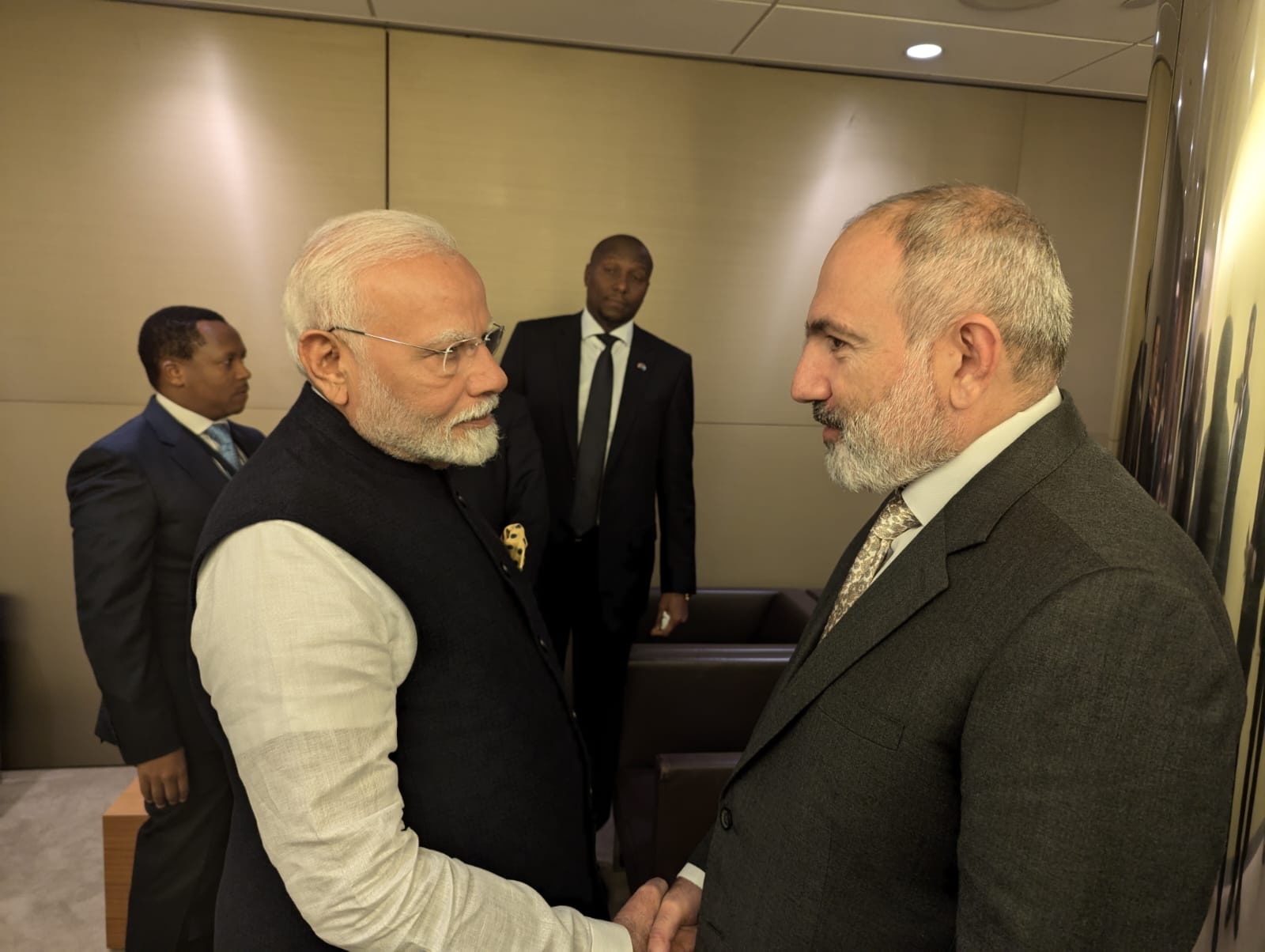
In his meetings, Modi also met Sheikh Sabah Khaled Al-Hamad Al-Sabah, the Crown Prince of Kuwait, and they discussed boosting bilateral ties in sectors such as pharmaceuticals, food processing, technology, and energy.
He also spoke to Nepal Prime Minister K P Oli about energy, technology, and trade issues.
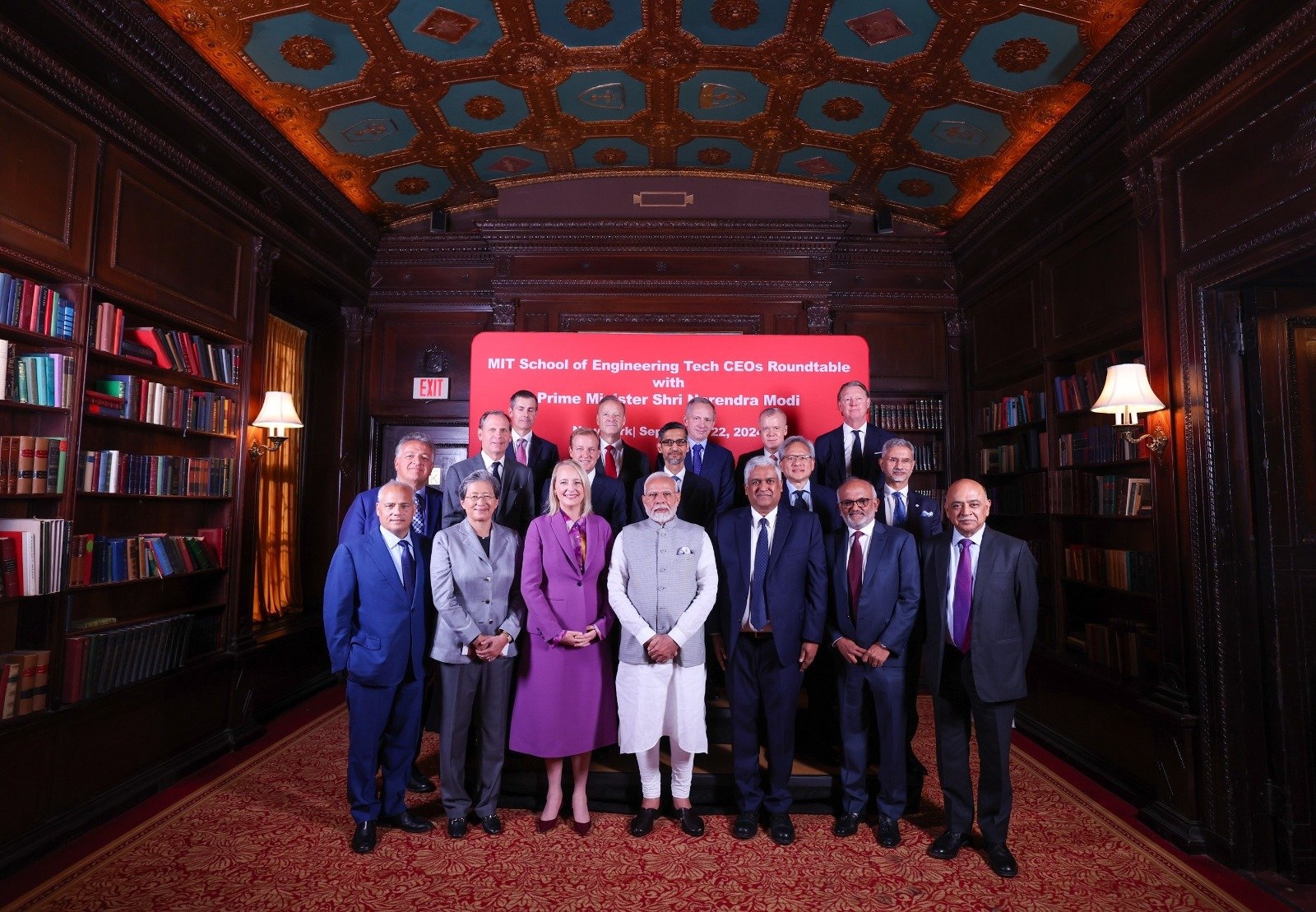
Lastly, Modi held a roundtable with technology industry leaders, including Google CEO Sundar Pichai. He encouraged them to capitalise on India’s growth story for collaboration and innovation, discussing cutting-edge fields like artificial intelligence, quantum computing , biotechnology, IT, and semiconductor technologies.
- Quad summit
- The United Nations
- The United States

The US has given Israel a 30-day ultimatum to address the humanitarian crisis in Gaza or risk losing military aid. The letter from Secretary of State Blinken and Defence Secretary Austin calls for easier access of relief materials and no forced evacuation of civilians. Israel is the top recipient of US aid, much of which is used for purchasing military equipment.
- India vs New Zealand highlights, 1st Test: Play called off in Bengaluru 2 hours ago
- UGC NET Result 2024 Live Updates: Check UGC NET June results at ugcnet.nta.ac.in 21 mins ago
- India vs Australia Highlights, Women’s T20 World Cup 2024: Harmanpreet Kaur’s fifty in vain as AUS beat IND by 9 runs 2 days ago
- India vs Bangladesh Highlights, 3rd T20: IND record 133-run win for 3-0 series sweep; Samson slams hundred 4 days ago

Top Stories

Buzzing Now

Oct 16: Latest News
- 01 ISSF Shooting World Cup: How nerves of steel and unique technique took 22-year-old Sonam Maskar to 10m air rifle silver
- 02 Despite poll announcement, Mahayuti, MVA yet to finalise seat-sharing arrangement
- 03 CBI nabs two Delhi cops for ‘taking’ Rs 10 lakh bribe
- 04 Bomb scare to 3 international flights: Chhattisgarh school boy behind threat message of ‘6 kg RDX in the flight’
- 05 Jarange breathes fire at Fadnavis, says he tried to wreck lives of Marathas
- Elections 2024
- Political Pulse
- Entertainment
- Movie Review
- Newsletters
- Web Stories
- Express Shorts
- Mini Crossword
- Health & Wellness
Modi State Visit Modi Promotes India to Congress After Meeting With Biden
Prime Minister Narendra Modi emphasized his country’s development and played up what he described as commonalities with the U.S. Earlier, he ducked a question about his government’s treatment of minorities.
- Share full article
Modi Praises ‘Limitless’ Potential of U.S.-India Partnership
In a speech to congress, prime minister narendra modi of india promoted his nation’s development and said the relationship between his country and the united states was important for democracy’s future..
The U.S. is the oldest — and India, the largest — democracy. Our partnership augurs well for the future of democracy. [cheers] Together, we shall give a better future to the world and a better world to the future. Everyone wants to understand India’s development, democracy and diversity. Everyone wants to know what India is doing right and how. We are not only growing bigger, but we are also growing faster. When India grows, the whole world grows. I can go on and go on. But to summarize I would say: The scope of our cooperation is endless, the potential of our synergy is limitless and the chemistry of our relations is effortless.

Peter Baker
Biden welcomes India’s prime minister despite concerns over human rights.
President Biden emphasized common ground with Prime Minister Narendra Modi of India on Thursday during a lavish state visit meant to bolster ties with the world’s most populous nation, while largely skirting points of friction over human rights and Russia’s war in Ukraine, at least in public.
After a pomp-filled, red-carpet arrival ceremony, Mr. Biden and Mr. Modi announced a range of initiatives to advance cooperation in technology, energy and military hardware but revealed no movement toward each other on the areas of disagreement that have strained the relationship in recent months, most especially Ukraine.
In a modest but notable breakthrough, however, Mr. Biden coaxed Mr. Modi into taking questions from reporters at a news conference, apparently the first time he has done so in his nearly decade-long tenure .
Here’s what else to know:
Challenged on his record on human rights and religious freedom, Mr. Modi insisted that democracy was “in India’s DNA” and denied that his government had engaged in discrimination based on race, faith or other such distinctions. Mr. Modi’s government has cracked down on dissent and hounded opponents in a way that has raised fears of an authoritarian turn not seen since India’s slip into dictatorship in the 1970s. In hosting Mr. Modi, Mr. Biden is pushing democracy concerns to the background .
The United States is trying to draw India closer , as the urgency for improved relations has intensified with Russia’s war on Ukraine. India has maintained military and economic relations with Russia, buying up Russian oil at a discount and staying away from backing United Nations resolutions that have condemned Russia’s aggression.
Mr. Modi gave an address to a joint session of Congress where he promoted his country’s development and played up what he described as common themes with the United States.
The two leaders announced initiatives advancing cooperation on telecommunications, semiconductors, artificial intelligence and other areas. Mr. Modi agreed to sign the Artemis Accords — principles governing peaceful exploration of the moon, Mars and other celestial bodies — and they will announce a joint mission to the International Space Station in 2024. The United States and India also will open additional consulates in each other’s country.
Tonight, the Bidens will host Mr. Modi for a state dinner on the South Lawn. The vegetarian menu — in accordance with Mr. Modi’s diet — includes an optional fish entree. The first course will be a marinated millet and grilled corn kernel salad with compressed watermelon and avocado sauce, followed by a main course of stuffed portobello mushrooms and creamy saffron-infused risotto.
Suhasini Raj

Indian television heaps praise on Modi during his trip.
“Super King of Diplomacy,” read the ticker placed in bold on top of one news channel. “Long live our friendship,” said another. A third declared, “The Boss in America.”
Mainstream Indian news channels — in Hindi, English and some regional languages — covered Prime Minister Narendra Modi’s reception in Washington with adulation, praising his diplomatic skills for millions of viewers before a crucial election year for him.
The visuals from Washington played into what Mr. Modi has already set as one of his main campaign themes: tying India’s rise as a major economic power with his rise as a global statesman.
“The scale, the splendor, the warmth,” one headline enthused. Others, such as “Modi’s breakthrough diplomacy” and “Watch history being made,” flooded Indians’ homes Thursday evening as Mr. Modi walked the red carpet to meet President Biden and the first lady, Jill Biden.
“Their body language reflected that they were incomplete without one another,” one news anchor said as visuals of the two leaders shaking hands played on the screen.
Mr. Modi has carefully crafted his relationship with traditional news outlets, using a mix of incentives and pressure tactics to get most of them on his side.
When uncomfortable issues arise — a state election loss, an ethnic war resulting in weeks of unrest and bloodshed in a northeastern state, a deadly three-way train crash — they are quick to deflect blame away from Mr. Modi.
And when a major moment like the state visit to Washington comes, they are happy to join in the cheerleading — a factor that, combined with how Mr. Modi’s party has mastered social media to take his messages viral, helps explain Mr. Modi’s talent for shaping politics to his benefit.
The coverage of Mr. Modi’s visit to the United States is a political boon, setting the agenda in his favor before he launches himself full-time into campaign mode for parliamentary elections next year.
While many channels showed the White House dinner menu ad nauseam, calling it “dinner for friendship,” some others waxed eloquent about the importance of the gifts Mr. Modi had carried for the Bidens. One anchor declared of a military deal between the two countries: “The biggest defense deal. The hearts of enemies will burn!”
And when, at his news conference with Mr. Biden, Mr. Modi skirted a question on India’s grim human rights record and suppression of free speech, one Hindi-language news anchor came to his rescue on her show, saying he had “very bravely” faced the question.
Lisa Friedman
The U.S. and India agree to speed deployment of electric buses.
The United States and India have long been at odds over the responsibility of different countries in tackling climate change. But as Prime Minister Narendra Modi wrapped up a visit to Washington, he and President Biden cast their nations as partners in the fight.
As Mr. Biden declared climate change an “existential threat to humanity” during a joint news conference on Thursday, Mr. Modi pledged that India was working to become a green energy hub. Both governments also announced plans to help India increase the production of electric vehicles and meet its ambitious goal of installing 500 gigawatts of wind, solar and other renewable energy this decade.
The Biden administration did not announce any direct U.S. funding for India. But senior administration officials said the governments had agreed on a plan they believed would encourage banks to give loans for electric buses, which are seen as a high-risk investment in India.
India aims to deploy 50,000 public electric buses over the next five years. The plan includes establishing three months of delayed payments so that companies can secure loans at lower rates. Biden administration officials said the payment security plan will help underwrite at least 10,000 electric buses.
The United States and India also announced a separate investment plan that officials said will be joined by private companies and others that aims to lower the cost of capital and attract international private finance for large-scale renewable energy projects. The joint announcement billed it a “first of its kind, multibillion dollar” package but no specific dollar figure from the United States or any other country or organization was announced.
Katie Rogers
Guests just started arriving at the White House for the state dinner. Some of the more notable names include Huma Abedin, a former senior adviser to Hillary Clinton; the designer Reem Acra; Apple’s Tim Cook; Hunter and Ashley Biden; and the president’s brother, James.
Alex Travelli and Mujib Mashal
Reporting from New Delhi
One accomplishment of Modi’s visit? Greater defense cooperation between India and the U.S.
One of the biggest takeaways from Prime Minister Narendra Modi’s state visit might be that it has injected new momentum into defense cooperation between the United States and India, a slow and turbulent undertaking in the past.
The two sides announced a deal for coproduction in India of engines for fighter aircraft, a $3 billion purchase of about 30 American Reaper drones by India, and a road map to expand cooperation between the two countries’ defense industries. There were also agreements on intelligence sharing and on space-based, quantum and other strategic technologies.
For the Biden administration, helping India expand its defense manufacturing tracks with its efforts to further isolate Moscow over its invasion of Ukraine . India has long relied on Russia for a majority of its military equipment, and any increase in manufacturing capability at home or diversification of its arms sources would lessen its purchases from Russia.
For India, the United States’ latest efforts to improve defense ties is in line with its attempt to grow its domestic manufacturing and reduce its reliance on foreign partners.
India’s military forces have stuck to most of the same weapons systems that they began using during the Cold War. India was neutral but tended to side more closely with the Soviet Union. Indian officials have said their dependence on Russian weapons over the decades was simply out of necessity: The U.S. long held back on sales of military equipment to India, and that has only started to change over the past two decades. As a result, the Indian armed forces still use equipment of Soviet design and specifications. Parts cannot be swapped out, piecemeal, for American-standard weaponry. In some rare cases, as with India’s use of Lockheed’s C-130 Hercules transport plane, a stand-alone American platform can be soldered onto the existing framework. But for the most part, the systems are not interoperable.
Technical challenges aside, one thing that the defense road map seems to be addressing is the reluctance that has kept the world’s biggest two democracies from seeing eye-to-eye. They have a long history of disagreement, over matters including Pakistan, Iraq and United Nations votes. But tensions with China are bringing them to the same table, especially after Indian and Chinese troops started clashing along their Himalayan border in 2020.
Australia and Japan, the other members of the fledgling security bloc aimed at containing China around the “Indo-Pacific region” (as the Americans renamed it, to include the Indian Ocean, in 2018), have long-established military partnerships and even alliances with the United States.
The “ Roadmap for U.S.-India Defense Industrial Cooperation ,” published earlier this month, illustrates the American goal of making India into something more like a formidable ally — and the Indian goal of beefing up its own capabilities. They find common cause in trying to “cooperatively produce the systems required to meet India’s military modernization objectives.”
But India’s ties with Russia are deep and cannot be undone quickly or with good will alone. Ajai Shukla, a retired colonel with the Indian Army who writes extensively about defense, is skeptical that America will find any durable role to play. He recalls how Alexander Kadakin, a Russian ambassador to India, liked to tell the story about visiting the Indian space centers and feeling more at home there than he did in Russia — because so many of the scientists were speaking Russian.
Karoun Demirjian
Modi waves to crowd in the third floor gallery, who stuck around to cheer him as he slowly makes his way toward the exit. Emphasis on slowly. He stopped for more autographs and pictures on the way out.
He texted from the speech to say that he “appreciated PM Modi’s unequivocal statement that India must be home to all faiths and celebrate all of them.” But he added that “American leaders need to also have the difficult conversations with Indian leaders about protecting minority rights, an open press and open internet.”
At the White House, some 400 guests are going to pass by reporters to attend the dinner. One of the guests is Representative Ro Khanna, Democrat of California, who played a part in inviting Modi to give an address to Congress.
Here’s why Modi and many other Indian politicians stay single.
When President Biden and his wife, Jill Biden, take their place on the red carpet at the White House on Thursday to welcome Prime Minister Narendra Modi of India, there will be an asymmetry of sorts in the picture-perfect setting.
Mr. Modi will go stag.
While a family-centric image is often a political selling point in the United States, in India, many top leaders — the prime minister among them — are proudly unattached, to make a statement that no other commitment can come between them and the nation.
Work-life balance? Not for politicians in the world’s largest democracy, who stay busy attending to the needs of 1.4 billion people and compete with one another in their declarations of sleep deprivation. (Mr. Modi clocks only four hours of slumber a night, his aides say.)
“Every moment of my time, every pore of my body, is only for my countrymen,” the prime minister said in 2019 after winning re-election .
India may seem a strange place for expressions of solitary political devotion. Here, family comes before self and arranged marriages keep families together. Nearly a third of new members of Parliament have had a relative in elected office or a prominent party position, according to one study .
But in a country tired of official corruption, with lawmakers enriching themselves and their families and ensuring political futures for their children, many voters have come to believe that single politicians are less likely to steal.
“The very strong perception,” said Ajoy Bose, a journalist and author, “is that they have no personal interest. That they belong to the people.”
Modi is sticking around in the well of the chamber to shake hands and sign autographs after the speech. In the gaggle of lawmakers around him are Representatives Shri Thanedar, Democrat of Michigan who was born in India; Mike Lawler, Republican of New York; Brad Sherman, Democrat of California; and Joe Wilson, Republican of South Carolina. Modi seems to be enjoying the attention and is not in a rush to leave the chamber -- though his security detail is trying to gently nudge him out.
As Modi makes his way out of the House chamber, he is stopped by members asking him to autograph their printed copies of his remarks.
Alex Travelli
India’s economy is already a star, but Modi wants the attention of American businesses and investors.
NEW DELHI — The state visit by Prime Minister Narendra Modi of India is full of eye-catching moments — practicing yoga outside the United Nations building in New York and addressing a joint session of Congress — that seem designed to burnish both India’s image on the world stage and his own image at home.
Apart from impressing voters back home and his fellow statesmen, Mr. Modi is hoping to get the attention of American businesses and investors.
India’s expanding economy is already in some ways a star. It displaced Britain as the world’s fifth biggest economy last year, and is on track to outpace both Germany and Japan in the decade ahead. The value of the companies listed on its stock markets are worth $3.3 trillion, more than ever before, and Mr. Modi’s government has tackled some challenges that have long stymied Indian growth, including rickety infrastructure and banks burdened with bad loans.
Foreign investors have taken notice, especially with much of the world’s economy looking shaky. A string of high-tech, high-value companies have flocked to India this year, with Apple and possibly Tesla making it known that they see a big future here.
But there are ominous signs, too. While foreign investment has been pouring in and the government has spent heavily on roads, energy and other public goods, private Indian investment has shrunk in proportion to the whole. And the incomes of average Indians have hardly budged in recent years, with most of the country still dependent on farming and many others working in jobs that barely keep them fed.
Indian and American policymakers and businessmen have been trying to devise ways that the United States could help India meet the moment — through a combination of trade, technology transfer, labor mobility and integration with global supply chains.
India’s trade with the United States is worth about $190 billion now, Atul Keshap, a former American ambassador to New Delhi who is president of the U.S.-India Business Council, said in an online discussion this week. It should soon be worth $500 billion, he argued, on par with the size of the U.S. trade relationships with only a few others: Canada, Mexico, the European Union and China.
The relationship could be boosted by the two countries’ altered relationships with China, not only in geopolitics, but also in civilian business and trade. American companies and political leaders are eyeing India — with its 1.4 billion people, same as China — as the sole country fit to shoulder some of the immense weight that China has carried in the world economy. “It’s a lot easier to invest $100 million in a country with 1.4 billion people than in a country with 40 million people,” said Cate Ambrose, chief executive of the Global Private Capital Association, an industry group focused on emerging markets.
With much of the world’s economy hindered by the war in Ukraine, inflation and other headwinds, the Indian economy’s power increasingly stands out. This week, Airbus, a European airplane-maker, signed deal to sell 500 aircraft to IndiGo, a low-cost Indian carrier founded in 2006. It is the kind of contract that American leaders dream of winning for the U.S. airplane giant Boeing.
Indians’ median incomes may be stagnant, even as gains made by wealthier people have brought the per capita income up to $1,200 a year. But the room for growth makes the country attractive as a consumer market. Last year, for example, 123 million passengers flew between India’s airports. The government’s goal is to reach 1 billion by 2040.
A new emphasis in the U.S.-India relationship is high-value manufacturing, and an initiative on emerging technologies has brought together government agencies from both countries to speed up cooperation on microchips, satellites and artificial intelligence. The White House argues that these projects, which sidestep bilateral trade negotiations, should help foster “resilient supply chains” for both countries.
Damien Cave
One of the things that makes Modi an interesting kind of popular leader in our current global moment might be his optimistic tone. He speaks of positive momentum, success and destiny more than flaws and enemies.
Mujib Mashal
As we wrote in our recent story about his role as a radio host, Modi has many avatars for keeping himself intimately omnipresent across India’s vastness — including that of a poet. He has written poetry in Gujarati, though he was reading a Hindi poem just now.
Congressional addresses often end with poetic language, but not usually poetry. After quoting the poem Amanda Gorman read at President Biden’s inauguration, Modi recited lines in Hindi that he penned himself.
On China, Modi has always been careful to avoid escalating tensions. When tensions at the India-China border escalated to bloody skirmishes, American diplomats were saying Modi’s government was not comfortable with U.S. officials mentioning China by name in statements made out of New Delhi.
A policy proposal from Modi, as he calls for the African Union to get full membership in the G20. (The speech so far has been big on promoting accomplishments but light on articulating demands for change.)
As Peter notes, the omissions of the words “Russia” and “China” show how carefully Modi is choosing his words as he supports the spirit of the U.S. position, while clearly signaling that India is not going to take a side in these geopolitical rivalries.
The technology transfer piece of the defense deal reflects not just improved U.S.-India ties, but also a major shift in how the United States works with allies in the Indo-Pacific. Australia is getting nuclear-powered subs from America. Japan is buying American Tomahawk missiles. It’s all part of a broader effort to balance China’s military growth.
U.S.-India defense relations have had to overcome a history of deep mistrust rooted in both bureaucracies. But it feels like the countries are turning a new page. The American defense secretary and national security adviser were both in New Delhi in the weeks before Modi’s visit to Washington.
India’s ties to Russia stretch decades, and India still relies on Russia for a majority of its military equipment. So India has been careful in calling for peace and dialogue while staying away from condemning Russia’s actions in Ukraine.
In discussing Ukraine, Modi calls for respecting U.N. principles of sovereignty, earning a standing ovation. He also said “we all must do what we can to stop the bloodshed and human suffering.” However, India continues to buy a lot of oil from Russia, engaging in a practice that the United States argues fuels the Russian war machine.
Likewise, when he discusses “the dark clouds of coercion and confrontation” that are “casting their shadow in the Indo-Pacific,” he leaves unstated who might be doing the coercing and confronting, never mentioning the word “China.”
When Modi mentions Ukraine, he shifts to passive construction. “With the Ukraine conflict, war has returned to Europe,” he said, without mentioning the word “Russia.”
Zolan Kanno-Youngs
Reporting from Washington
State Dinners: Who Gets Them, Who Doesn’t and Why They Matter
As President Biden welcomed India’s prime minister to the White House , the two leaders were looking for more than a fine vegetarian meal and a night of glitzy entertainment.
Under the guise of pomp and pageantry, state visits are a chance for presidents to push foreign dignitaries to align with American interests. They can be a way to celebrate old, ironclad alliances . And with high-profile guest lists , multicourse meals and top-flight entertainment, they are much-coveted invites in Washington .
“These are not just dinners,” said Matthew Costello, a senior historian for the White House Historical Association. “There’s a lot more that goes into them in terms of planning, in terms of invitations, and a lot is geopolitics, a lot is foreign policy.”
When President Dwight D. Eisenhower invited Nikita Khrushchev, the leader of the Soviet Union, to the White House in 1959, he was focused on thawing Cold War tensions after the launch of Sputnik. Before President Barack Obama hosted President Xi Jinping of China, the two countries negotiated for weeks over an arms control accord for cyberspace. President Ulysses S. Grant held the first state dinner for King David Kalakaua of Hawaii to strengthen trade.
The dinners can also provide a window into the regions the United States is prioritizing — and the ones being neglected.
European and Latin American nations have received the most state dinner invitations, while sub-Saharan African and Southeast Asian nations have received the fewest, according to a study by the Center for Global Development that tracked 40 years of state visits from the Carter to Obama administrations.
Out of 160 dinners, just 15 were with guests from sub-Saharan Africa, the study found.
“To be a foreign leader and not get the state dinner, you feel snubbed,” said Douglas Brinkley, a presidential historian. “It’s often the smaller countries in the world who don’t get them, but when you’re dealing with big power players like India, it’s a must.”
The invitation to Prime Minister Narendra Modi of India was not without controversy. Mr. Biden has made the global struggle between democracy and autocracy a key part of his foreign policy, but Mr. Modi’s government has cracked down on dissent in ways that have raised fears of authoritarianism.
Still, the White House views the world’s most populous nation as a potentially welcome addition to its coalition against Russia’s invasion of Ukraine, as well as a crucial player in its growing economic competition with China.
The other nations whose leaders received the official invitation to dine with Mr. Biden — France and South Korea — have also been partners in Mr. Biden’s effort to confront Russia.
The state dinner can sometimes be a means of smoothing over hiccups among allies.
Mr. Biden hosted President Emmanuel Macron of France for the first state visit of his administration, more than a year after the two nations feuded over a deal to provide Australians with nuclear-powered submarines. Mr. Biden invited Anthony Albanese, the prime minister of Australia, for a state visit after he canceled a trip there in May because of negotiations over the debt ceiling with congressional Republicans.
“There are multiple times we see presidents using these visits to not just describe immediate concerns, but also to talk through short-term and long-term solutions,” Mr. Costello said.
Domestic politics often hang over the dinner, as well.
Julianna Smoot, Mr. Obama’s social secretary from 2010 to 2011, said she made sure to invite the often-feuding majority and minority leaders of the Senate, Harry Reid and Mitch McConnell, to state dinners for a rare détente. Governors and mayors who had previously expressed support or campaigned for the president were likely to make the list. And the primary donors of presidential campaigns could expect an invitation, particularly if they had business connections to the visiting nation.
“They didn’t become donors in politics because they were slouches,” Ms. Smoot said. “A lot of them do international work and have an interest” in attending the dinner.
The prospect of strengthening political partnerships overseas and within U.S. borders was usually enough to get a quick response from invitees.
“You’re supposed to say yes,” Ms. Smoot said of responding to the invitations, “unless there’s a death in the family.”
Cheers and laughs for Modi’s hat tip to how well Indian American kids have done in successive national spelling bees.
Mentioning that the United States “has become one of our most important defense partners” gets a standing ovation. Not mentioned: India still buys weapons from Russia.
Another thought on Modi’s sales pitch. William Dalrymple, the esteemed historian of India’s past empires, told me recently that India’s sense of overconfidence might be its biggest problem at the moment, hindering the country’s ability to fully confront and solve the enormous challenges it faces, like youth unemployment and social, economic and religious divides.
Very true, Karoun. Not much love for digital payments here in a chamber that has struggled with how to regulate technology of any kind!
Advertisement
What Modi’s Visit to Washington Tells Us About Indian American Voters
N arendra Modi was once shunned by the U.S. In 2005, the then-chief minister of the Indian state of Gujarat was denied a diplomatic visa amid accusations he tacitly supported Hindu mobs during communal violence three years earlier that left more than a thousand people, most of them Muslim, dead.
But he is shunned no more. On June 22, Washington will roll out the red carpet for Modi, who will become just the third world leader (after France’s Emmanuel Macron and South Korea’s Yoon Suk Yeol) to be invited by President Joe Biden for a state visit and dinner, the highest of diplomatic receptions typically reserved for only the closest of allies. That Biden has chosen to fete Modi in this way is indicative of the “deep and close partnership” between their two countries, the White House said in a statement , especially on matters of foreign policy. But it is perhaps also emblematic of the growing visibility and electoral heft of the Indian American community.
“Indian Americans are a key constituency and a key vote in a number of swing states,” says Sara Sadhwani, an assistant professor of politics at Pomona College and a senior researcher at AAPI Data, which publishes demographic data and policy research on Asian Americans.
More from TIME
With a population of nearly 5 million, Indian Americans are the second-largest immigrant group and fastest-growing voting bloc in the U.S. today. Their impact is evident at the ballot box, where Indian Americans voted in record numbers during the 2020 presidential election. It is also becoming increasingly apparent in the halls of power, from Congress (where there are five Indian American lawmakers currently serving, up from just one a decade ago) to the White House (where Kamala Harris, who is biracial, made history as the first Vice President of Indian heritage). While every presidential contest since 2016 has featured at least one Indian American candidate, 2024 is poised to be the first race to feature at least two: Nikki Hayley, the daughter of Sikh immigrants from Punjab, and Vivek Ramaswamy, whose parents hail from Kerala.
Modi’s enduring popularity among the diaspora

The Indian American community’s political weight has not been lost on Modi, who has leveraged its influence time and again. When the Prime Minister first came to power in 2014, he was received by 20,000 spectators at a sold-out event in New York’s Madison Square Garden during a five-day visit to the U.S. It was the largest reception any foreign leader has received in the country after the Pope. “This is India’s century,” Modi declared, sending the wildly enthusiastic crowd into a frenzy.
In 2019, Modi once again received a jubilant reception with nearly 50,000 spectators at a “Howdy Modi” rally in Houston.
A survey on Indian American attitudes conducted by the Carnegie Endowment for International Peace and YouGov in 2020 found that Indian Americans held broadly favorable views of Modi, with nearly half approving of his performance as Prime Minister. Milan Vaishnav, director of the South Asia Program at Carnegie, says that this might be because the Indian diaspora sees Modi as “reclaiming India’s rightful status on the global scene.”
“India is now perceived to be both big and vital to geopolitics,” Vaishnav adds. Whether it’s hosting the G-20, being feted at the state dinner by President Biden, or even maintaining cordial relations with Vladimir Putin, he says that “many Indian diaspora members view this as a sign that India is back and experiencing a period of resurgence.”
The support for Modi comes despite the fact that while Indian Americans are hardly a monolith, they tend to vote for Democrats, rather than Republicans who more closely align with Modi’s right-wing Bharatiya Janata Party. As many as 74% of Indian American voters are thought to have backed Biden in 2020, according to a 2022 survey by AAPI Data , compared to just 15% supporting Donald Trump.
While Biden’s welcoming of Modi is widely seen in the context of Washington hoping to strike defense deals with New Delhi (most analysts tell TIME the reason for the visit can be distilled to one word—China—owing to the indispensable role of India in U.S. efforts to deter Chinese aggression), it’s also recognizing Modi’s popularity among a key American voting bloc. “In a time when the country has elections decided by four states and a margin of a few percent or less, every community really matters,” says Neil Makhija, the president of Indian American Impact advocacy group. “Ours really showed up in a significant way for [Biden] in Georgia, in Pennsylvania, in Arizona.”
Still, the Republican Party sees Indian Americans as a “natural constituency,” Vaishnav says. “They are well-off, and they’re business oriented. They care about low taxes, low regulation, and entrepreneurship, and they’re socially conservative. So I don’t think it’s a group that the Democratic Party is going to take for granted.”
A “very awkward” dilemma
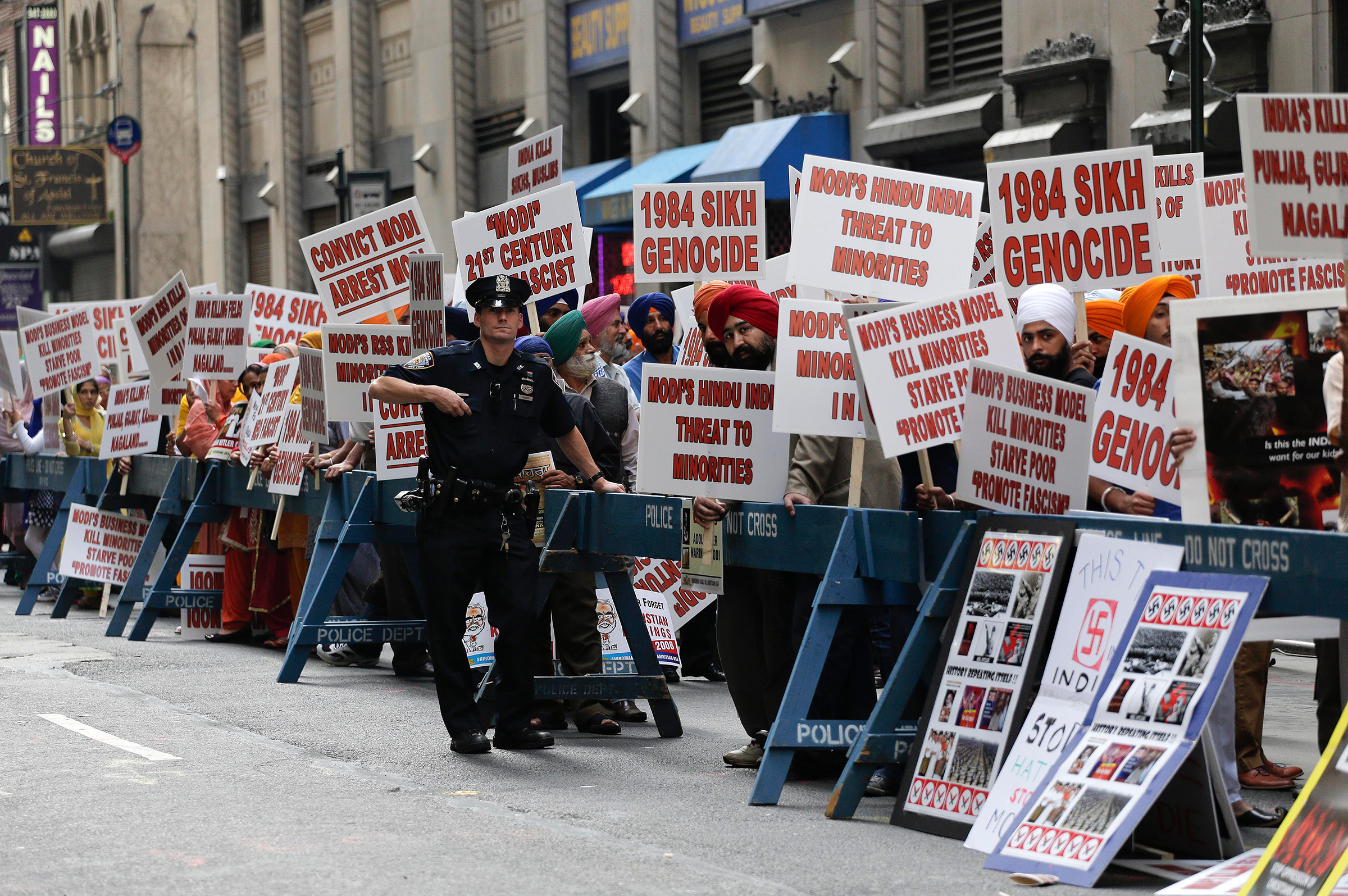
Modi’s state visit also poses a strategic challenge to Biden. As a candidate, the U.S. President made defending human rights and democracy a cornerstone of his foreign policy agenda. Critics argue that his embrace of Modi, who over his two terms as Prime Minister has overseen significant democratic backsliding in India, is doing just the opposite.
The controversial Indian leader—who is poised to win his third term next year—has been accused of aggressively championing a Hindu-nationalist agenda that critics say reinvents the very idea of India as a pluralist, secular democracy to a religious, nationalist autocracy. Under Modi’s leadership, India has passed discriminatory laws that have alienated nearly 200 million Muslims; squashed dissent by jailing journalists, activists, and civil society organizations; and exercised judicial influence against his political opponents (notably, Rahul Gandhi , the de facto leader and scion of the Gandhi-Nehru family at the helm of the opposition Congress Party).
The U.S. has taken note. The State Department’s annual Religious Freedom Report, a survey of religious freedoms around the world, has expressed a number of concerns over India in recent years. It was notable that unlike last year, U.S. Secretary of State Antony Blinken made no mention of India in his speech this year, which analysts saw as a move to keep U.S.-India relations friendly ahead of Modi’s visit.
But according to Audrey Truschke, an associate professor of South Asian history at Rutgers University and a vocal critic of Modi’s Hindu nationalist base, the decision to host Modi shows that the “Biden administration does not care about human rights in India. If they did, there is absolutely no way that they would be hosting Modi right now.”
“It’s very awkward for the administration,” adds Michael Kugelman, the director of the South Asia Institute at the Wilson Center think-tank in Washington, D.C. “The strategic imperatives of partnership limit the options for the administration to bring attention to this issue—especially publicly, given that this Indian government does not take kindly to any type of external criticism of its internal policies.” The top priority for the administration, he says, will be to “avoid any drama.”
While the White House may want to keep the visit as anodyne as possible, the same doesn’t appear to be the case for the Indian American community at large. In the run up to Modi’s visit, pro-Modi groups have organized “Unity” marches in nearly 20 American cities on June 18, while those opposed to Modi’s presence plan to stage a rally near the White House to coincide with his arrival on June 22.
In an open letter drafted by Hindus for Human Rights, a Washington D.C.-based advocacy group, several Indian Americans, human rights advocates, and concerned allies have also urged Biden to “push back” against the Indian government’s “escalating attacks on human rights and democracy.”
By honoring Modi, Truschke warns that the White House could inadvertently encourage communal violence within the Indian American community. “This will make Hindu nationalist groups feel even more emboldened in the U.S.,” says Truschke, who herself has been on the receiving end of threats from far-right Hindu nationalists.
More Must-Reads from TIME
- Nicola Coughlan Bet on Herself—And Won
- What Kind of President Would Kamala Harris Be?
- Is Adrenal Fatigue Real?
- Why It's So Hard to Quit Vaping
- Our Guide to Voting in the 2024 Election
- The 10 Races That Will Determine Control of the Senate
- Column: How My Shame Became My Strength
- Meet TIME's Newest Class of Next Generation Leaders
Write to Yasmeen Serhan at [email protected] and Astha Rajvanshi at [email protected]

IMAGES
VIDEO
COMMENTS
Modi’s visit to the US came next only to the unfortunate implosion of a Titanic-research submersible on the New York Times‘s homepage on Friday, with its biggest story headlined “Biden Seeks to Bolster Ties With Modi While Soft-Pedaling Differences.”
CNN — Indian Prime Minister Narendra Modi was once shunned by the United States. Denied a visa for “severe violations of religious freedom,” he was effectively banned from entering the country...
Indian Prime Minister Narendra Modi's visit to the US has assumed huge significance amid global economic and geopolitical headwinds. The White House is pulling out all the stops to welcome...
The visit has big implications for U.S.-India relations as President Biden seeks to shore up an alliance against Russia’s aggression and China’s economic influence.
Indian Prime Minister Narendra Modi's visit to the United States has brought him to New York. On Sunday, Modi addressed an estimated 13,000 people at a cultural celebration at Long Island's Nassau Coliseum.
On Day 1 of his US visit, Prime Minister Modi attended the Quad Summit hosted by President Joe Biden in Wilmington, Delaware. The summit was also attended by Australian Prime Minister Anthony Albanese and Japanese Prime Minister Fumio Kishida.
Social media was flooded with montage videos, set to regal background music, of Mr. Modi making a grand entrance into the House of Representatives for his address to a joint session of Congress.
President Biden emphasized common ground with Prime Minister Narendra Modi of India on Thursday during a lavish state visit meant to bolster ties with the world’s most populous nation, while...
Following a lavish state visit by Indian Prime Minister Narendra Modi to Washington, US President Joe Biden has called his country's partnership with India among the "most consequential in the...
Modi’s state visit also poses a strategic challenge to Biden. As a candidate, the U.S. President made defending human rights and democracy a cornerstone of his foreign policy agenda.